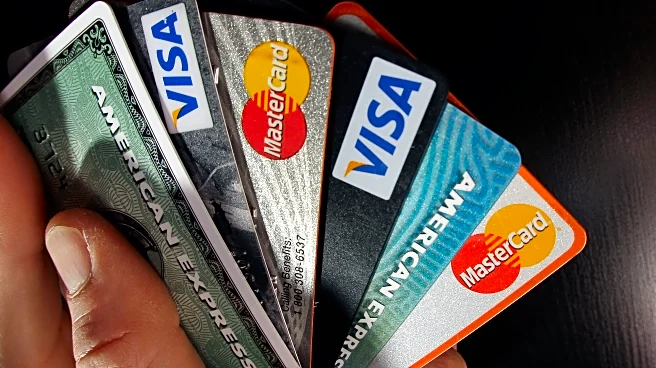What is the story about?
What's Happening?
The Federal Reserve has reduced its benchmark interest rate by a quarter-point, marking the first cut in nine months. This decision lowers the short-term rate to approximately 4.1%, down from 4.3%. The Fed plans to implement two more rate cuts before the year's end. The rate cut aims to balance inflation control and employment stimulation, as inflation remains above the Fed's 2% target and the job market shows signs of weakness. The cut is expected to gradually affect mortgage rates, providing some relief to borrowers over time. However, the impact on auto loans and credit card rates may be slower, with current average rates at 7.19% for auto loans and 20.13% for credit cards. Savers might see a decline in yields from high-yield savings accounts and certificates of deposit, which have been offering rates above 4%.
Why It's Important?
The Federal Reserve's rate cut is significant as it influences borrowing costs for consumers across various financial products, including mortgages, auto loans, and credit cards. Lower rates can ease financial burdens for households, offering opportunities to refinance or consolidate debt. This is particularly beneficial for homeowners and recent graduates with substantial debt. However, the cut may also lead to reduced interest on savings accounts, affecting those relying on savings for returns. The decision reflects the Fed's attempt to manage economic growth amid high inflation and a cooling job market, impacting both borrowers and savers.
What's Next?
The Federal Reserve plans to cut rates two more times before the end of the year, which could further influence borrowing costs and savings yields. Stakeholders, including financial institutions and consumers, will likely monitor these changes closely. Borrowers may seek refinancing options, while savers might adjust their strategies to maximize returns. The broader economic impact will depend on how these rate changes interact with inflation and employment trends.
AI Generated Content
Do you find this article useful?














